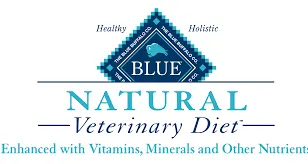Diagnosing Cutaneous Adverse Food Reactions in the Allergic Patient: What’s New & What Works from a Dermatologist’s Perspective

This content is provided by Blue Buffalo and has been peer reviewed. Clinician's Brief does not inherently endorse any product or organization advertised across its properties. The appearance of an advertisement on Clinician's Brief properties is neither a guarantee nor an endorsement of the product or advertising claims. Clinician's Brief is not responsible for the content promoted in an advertisement.
Adverse food reactions (AFR) include both food allergy (immunologic response) and food intolerance (non-immunologic response), typically difficult to discern in the clinical setting.1,2 AFRs manifest commonly through the skin (cutaneous adverse food reaction, CAFR) and the gastrointestinal system, although rarely other body systems may be affected.1,3 The most common food allergens include beef, dairy products, chicken, and wheat in the dog; beef, chicken, and fish are the top offenders in the cat.4 The true prevalence of CAFR is unknown, but available data reports prevalence of those with cutaneous signs to be 0.22-6% in cats and 7.6-25% in dogs.4 Despite ongoing efforts to find more convenient forms of testing, in vitro and in vivo tests are not considered acceptable tools for use in CAFR diagnosis, leaving the elimination diet trial (EDT), followed by dietary provocation, as the “gold standard.”5-8
An EDT should be considered for those allergic patients displaying non-seasonal clinical signs, those where the clinical pattern is atypical for atopic dermatitis (AD), those with signs of concurrent gastrointestinal disturbances, and/or those who are not responsive to typical AD treatments. CAFR and AD sensu stricto can manifest with the same signs, and moreover, food may trigger a flare of pruritic dermatitis in dogs that is clinically characteristic of AD. This manifestation has been termed food-induced atopic dermatitis (FIAD).1,7,8 The overlap of clinical manifestations demonstrates why an EDT is a crucial diagnostic tool in the allergy work up. See table 1 for a review of the common clinical signs reported in AFRs.1,2,4,9
TABLE 1: Summary of Clinical Signs in Canine & Feline AFRs1,2,4,9
Selecting an elimination diet (ED) should be individualized to the pet, accounting for several factors on the pet’s behalf (dietary history, life stage, presence of comorbidities also requiring dietary modifications) and on the owner’s behalf (budget, personal dietary preferences that may influence what their pet eats, commercial diet perceptions, willingness to home cook). See Table 2 for a summary of ED options for CAFR diagnosis.1,10-14
TABLE 2: Summary of Elimination Diet Trial Options for CAFR Diagnosis1,10-14
There can be variations in nutrient profile between dry and canned formulations of the same diet. Example: Royal Canin Vegetarian Dry vs. Canned (latter contains soy protein isolate). Always check if diet is appropriate for the life stage of the pet.
The EDT itself consists of the restrictive period and provocation phase.
Restrictive period: The pet may only ingest the ED, avoiding exposure to any other flavored items (treats, medications, supplements, preventatives, toys, rawhides).1 The recommended duration of the trial is 8 weeks, minimum, which increases the sensitivity of diagnosis to >90% for both species.15
Provocation phase: At the end of the restrictive phase, the pet is fed back its original diet to confirm relapse of clinical signs.1,2,7,8,16 The ED should be resumed at the first sign of a flare, which could occur with as little as 1 teaspoon of the original diet and typically occurs between day 1-14 of provocation.7,11,16 One study found that more than 90% of dogs and cats flared by day 14 and day 7, respectively.16 Once a provocation flare has resolved with the return of the ED, a single ingredient challenge can then be performed to identify specific allergenic triggers. Lifetime avoidance of the offending trigger is recommended in those with confirmed CAFR.
Many of the pets starting an EDT have chronic, self-perpetuating skin changes that can take significant time to improve clinically, hence the prolonged duration recommended for an EDT. Interpretation of a pet’s response to an EDT can be influenced by outside factors, such as the onset of secondary skin infections, which commonly develop because of allergic inflammation. Recent studies in dogs have shown that use of systemic anti-inflammatory interventions (tapering course of prednisolone or on-label dose of oclacitinib) when used for the first 2-3 weeks of an EDT can dampen inflammation and pruritus, thereby possibly shortening the duration of EDT by 2-4 weeks for those dogs with FIAD.7,8 In these studies, ED provocation was performed 2 weeks off pharmaceuticals as long as relapsing allergic signs did not occur, with CAFR diagnosis reached for some as early as 4-6 weeks after starting an EDT; diagnosis was made only once clinical signs relapsed with provocation of the original diet and with spontaneous remission of signs once the ED was resumed.7,8 In a clinical setting, it would be reasonable to consider initiating one of these pharmaceutical interventions when deemed appropriate by the overseeing clinician to aid in minimizing this inflammation at the start of an EDT. This pharmaceutical intervention may ultimately help owners better interpret their pet’s response to an EDT at the 8 to 12-week mark by reducing lingering inflammation, while providing immediate symptomatic relief for quality-of-life purposes as an EDT gets underway.
Lastly, we cannot discuss EDTs without briefly discussing compliance, as it can be the biggest impedance in CAFR diagnosis given the strict guidelines that we task owners with.1,7,17 One study found that 75% of surveyed dog owners confessed to dietary indiscretions during EDTs, which supports what we already know: frequent check-ins and encouragement throughout the entire EDT process is crucial to a successful outcome!17
